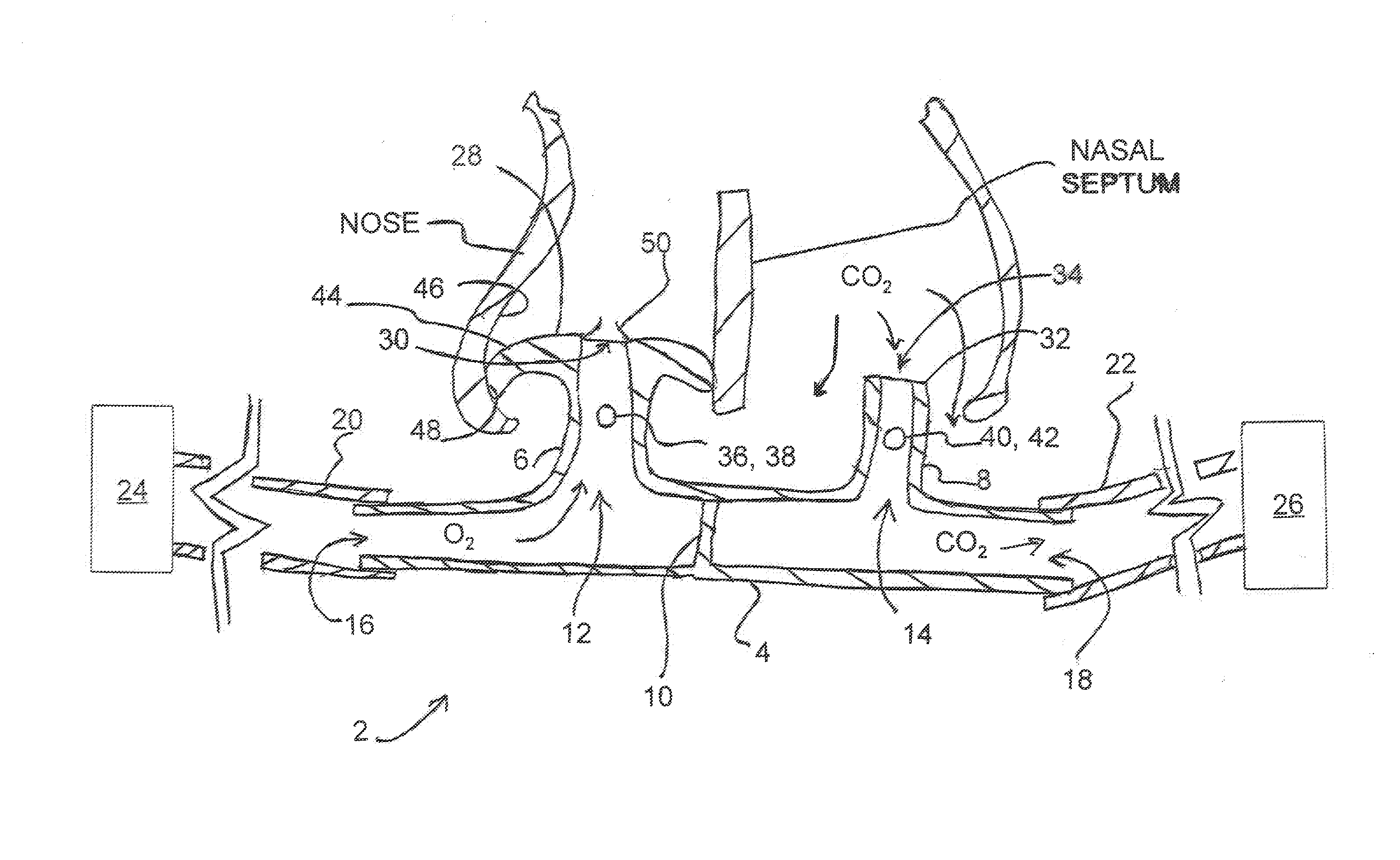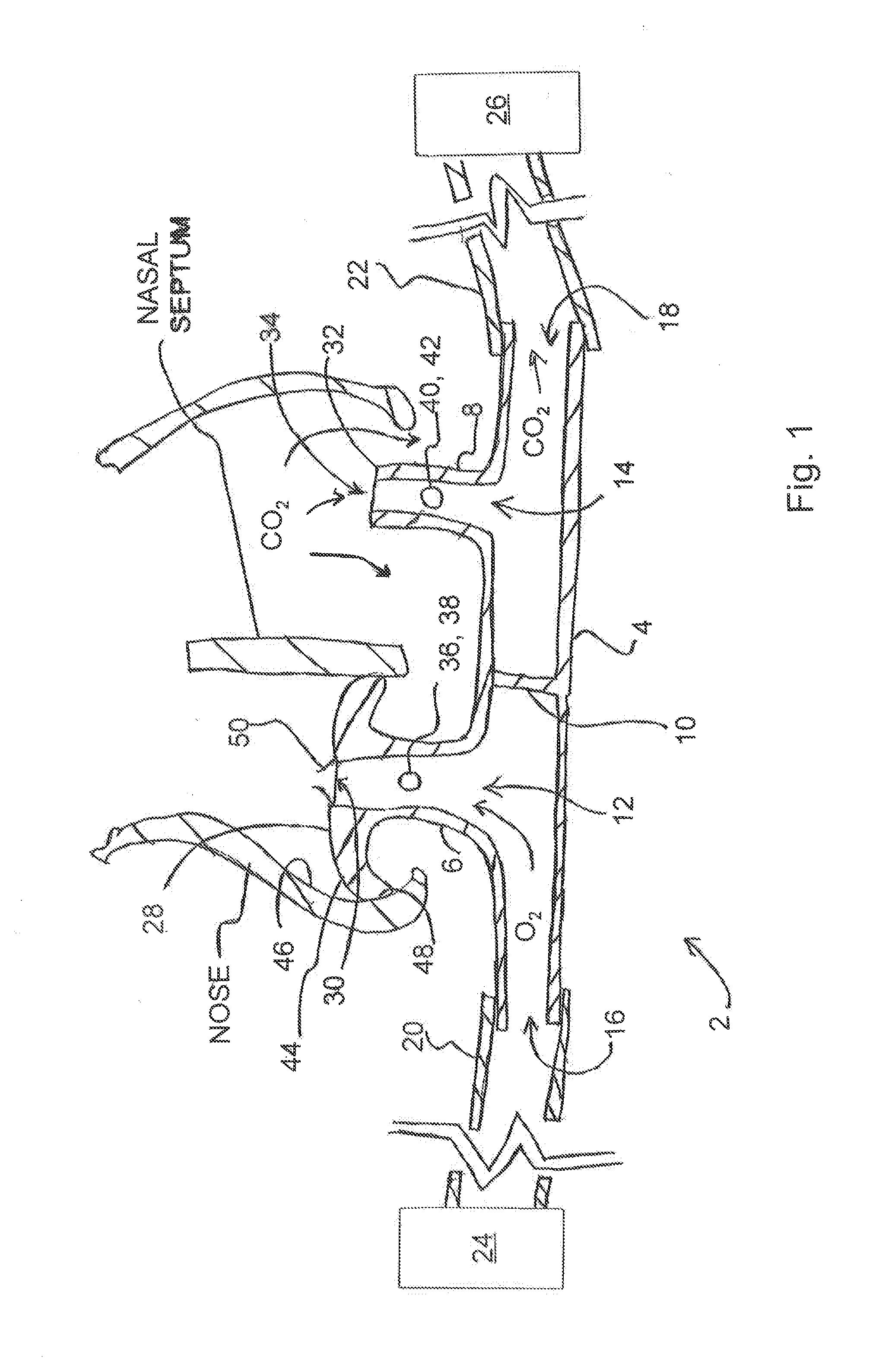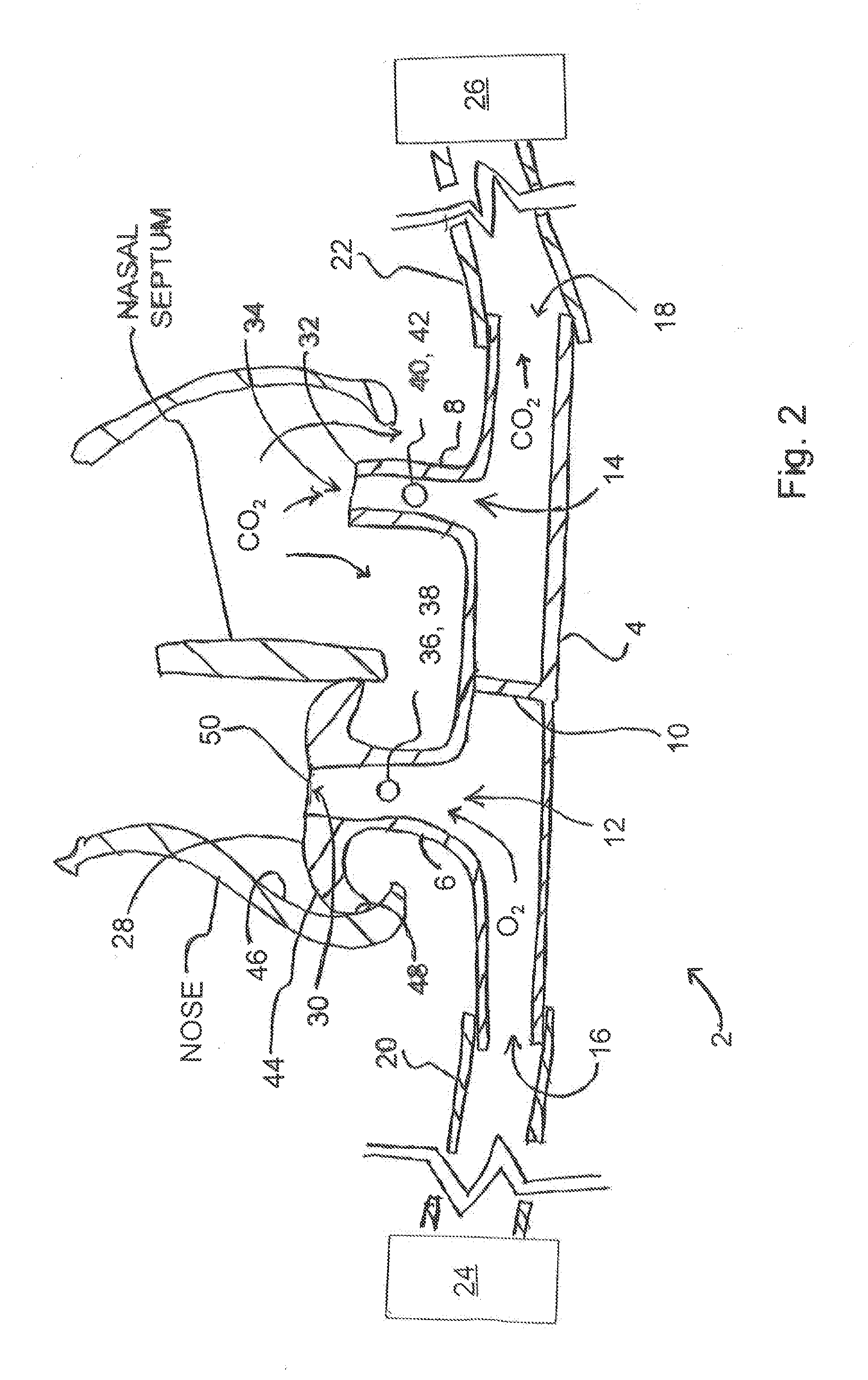Method and system with divided cannula having low oxygen flow rate and improved end-tidal co2 measurement
a divided cannula and oxygen flow rate technology, applied in the field of new and improved divided nasal cannulas, can solve the problems of skewing affecting the accuracy of analysis, and the amount of oxygen supplied to the patient did not equal the amount of oxygen, so as to facilitate communication, facilitate only supplying, and facilitate communication
- Summary
- Abstract
- Description
- Claims
- Application Information
AI Technical Summary
Benefits of technology
Problems solved by technology
Method used
Image
Examples
Embodiment Construction
[0022]The present invention will be understood by reference to the following detailed description, which should be read in conjunction with the appended drawings. It is to be appreciated that the following detailed description of various embodiments is by way of example only and is not meant to limit, in any way, the scope of the present invention.
[0023]Turning now to FIGS. 1 and 2, a brief description concerning the various components of the present invention will now be briefly discussed. As can be seen in this embodiment, the nasal cannula 2 generally comprises a generally tubular elongate face piece 4 having a first insufflating nare 6 and a second sampling nare 8, respectively, and a dividing septum 10 located therebetween. The dividing septum 10 is disposed and generally centered within the face piece 4, between a pair of respective passages 12 and 14 which facilitate communication with the respective first and second nares 6 and 8.
[0024]A first opening 16 is formed in a first...
PUM
 Login to View More
Login to View More Abstract
Description
Claims
Application Information
 Login to View More
Login to View More - R&D
- Intellectual Property
- Life Sciences
- Materials
- Tech Scout
- Unparalleled Data Quality
- Higher Quality Content
- 60% Fewer Hallucinations
Browse by: Latest US Patents, China's latest patents, Technical Efficacy Thesaurus, Application Domain, Technology Topic, Popular Technical Reports.
© 2025 PatSnap. All rights reserved.Legal|Privacy policy|Modern Slavery Act Transparency Statement|Sitemap|About US| Contact US: help@patsnap.com



